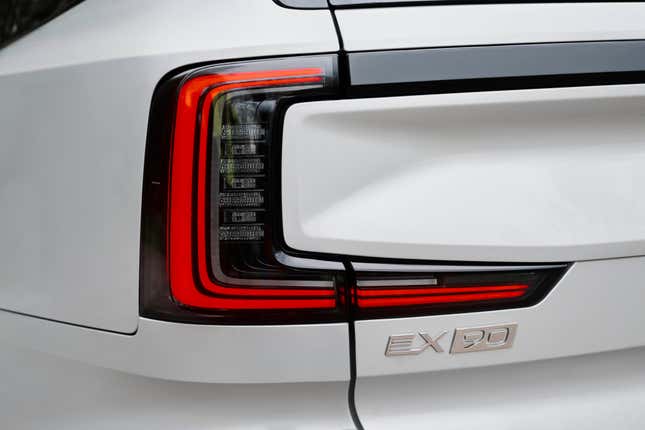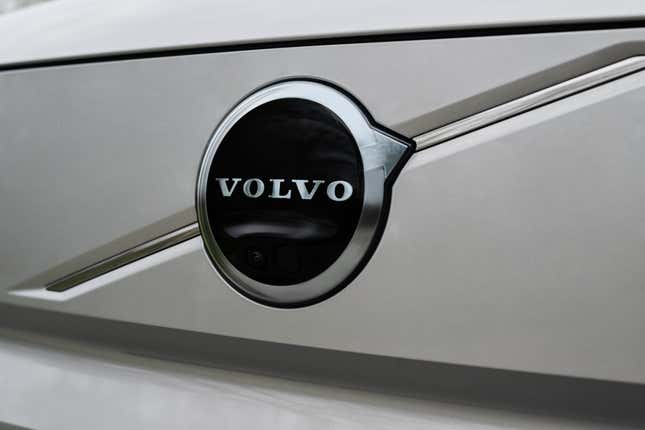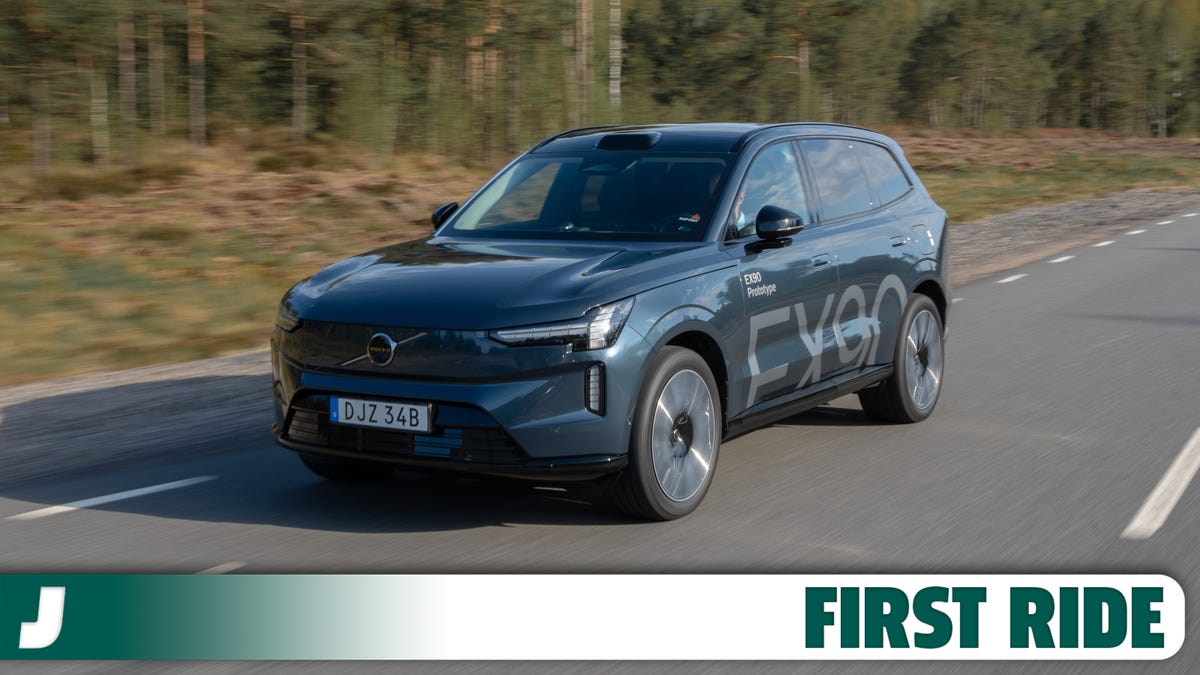While most of the world’s carmakers — and the press outlets who dutifully chronicle their every mood swing — are busy hyperventilating over unfair subsidies greasing the skids for the cataclysmic Chinese electric car menace come to up-end the auto business we westerners all know and love, Volvo Cars and its fans can only thank its lucky stars that it fell into the arms of China’s Geely and not, for instance, General Motors or any one of the other foot-dragging plodders currently walking back heady promises to field all-electric lineups in some foreseeable future.
Cut loose from the benign but suddenly underfunded ministrations of the Ford Motor Company in 2010, Volvo under Geely has been largely allowed to get on with it, blending the inspiration of the Swedes’ own best design and engineering minds with vitally needed access to capital such as the Chinese firm possessed, along with batteries, plant capacity, EV know-how and product synergies. The association has helped Volvo plow ahead in the electric realm while keeping costs down and profits up, with a fresh lineup, plans for a new electric model every year, and the goal of an all-electric fleet by 2030. And, of late, Volvo has posted record sales (though its EV sales tanked in the U.S. last quarter).
Arriving on the heels of the truly winning (if yet to hit American showrooms) EX30, Volvo’s small electric crossover, comes the latest demonstration of its good fortune, the EX90. A seven-seat, all-electric large SUV set to be built at Volvo’s South Carolina plant, it’s conceptually a thematic variation on the XC90 gasoline-fired SUV, at once familiar yet an almost completely different car. Leaning into its brand heritage and long-professed corporate values, Volvo calls the new machine “the safest car to ever hit the road” as well as its most technically advanced model yet.

While deliveries won’t start until November, orders are being taken now at a few grand less than $80,000, a price point one doesn’t usually approach on a lark. To better explain the powerful claims being made for the EX90 and to get the conversation started, Volvo invited several delegations of journalists from around the world to preview its latest machine in Sweden, Jalopnik among them. Not to drive it ourselves, mind you, but to “ride along.” In other words, a chance to experience the EX90’s vibe, while testing its meddle — as well as the recycled metals, sustainably sourced fabrics and interior materials of Volvo’s latest flagship — as best one can from a passenger seat.
With the EX90, Volvo is doubling down on its vaunted safety focus, restating a bold commitment to eliminate crashes, road fatalities, and emissions for all time. Clearly a long row to hoe, but a noble ambition. A good place to start examining the new machine’s enhanced safety mission, then, might be its London taxi–like roof top prow, situated just above the windshield. Slightly odd but strangely cool, it provides better protection for sensors than a location at grille or bumper height, as well as providing a better view. Or, as Volvo’s head of exterior design T. John Mayer put it, locating them at the front of the car would be “the equivalent to having eyes on your knees.”
“Born electric and software defined,” in Volvo CEO Jim Rowan’s pithy summary; a rolling tribute to new technology, the EX90 is not just a “new car,” the company further opines in its press materials, but “a highly advanced computer on wheels,” one that’s “designed to get better over time” thanks to over-the-air updates. Along with eight cameras, five radars, 16 ultra-sonic sensors and what Volvo terms “a cutting-edge LiDAR sensor,” a new core computing platform and associated software enable a particularly crisp, 360-degree view of the car and its surroundings to aid in navigation and provide safe, crunch-free passage, while an enhanced battery of driver observation tools aim to minimize and compensate for driver inattention.
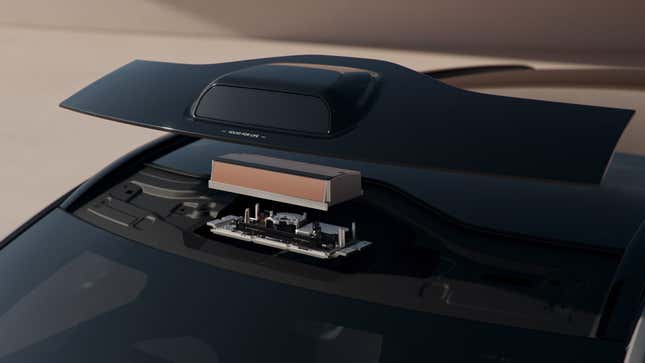
The advantages of adding LiDAR to a safety suite that includes cameras and radar, Volvo says, are inarguable, though company reps are careful when questioned not to criticize Tesla, whose supreme overlord Elon Musk recently claimed LiDAR was expensive frippery, unneeded for its “full self-driving” system. With only using cameras, “they’re doing the best that can be done, really good stuff,” one polite Volvo team leader told us. Curiously, though, in yet another Tesla head-scratcher published by TechCrunch, a recent earnings report from LiDAR supplier Luminar suggested that Tesla was its biggest LiDAR customer in the first quarter of 2024, Musk’s public derision of the technology notwithstanding. Volvo maintains the advantages of LiDAR, with its pulsed laser reporting back to the mothership, include superior capability in the dark and at greater distances, with a range of over 820 feet, plus an enhanced ability to detect smaller objects.
Even a highly aware car needs a driver who’s paying attention, so the company is also keen on a new “driver understanding system,” which enhances the EX90’s ability to assess the driver’s state of concentration and awareness. It uses two cameras monitoring eye-gaze patterns, and a capacitive wheel that can detect a driver’s touch helps analyze steering behaviors. Remedies the EX90 might engage in the case of a disengaged driver include varying audible alerts of increasing intensity, automatic deployment of the car’s flashers to alert other road users to a less than focused driver, and even causing the car to slow down and pull itself over to the side of the road.
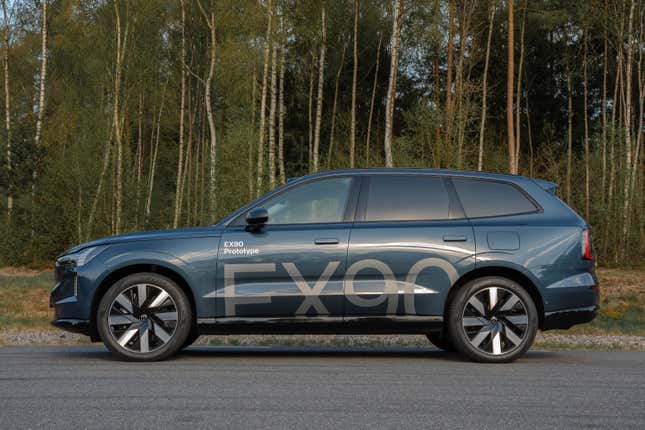
All of these actions can be enabled, disabled, or enhanced with over-the-air updates as technology and the company’s understanding of what’s working and what’s not improve. Volvo doesn’t call it beta-testing, though in a sense it is, albeit one that doesn’t promise extraordinary levels of autonomy — even if one day it might. For Volvo claims the installed hardware is ready for unsupervised autonomous driving, but the company awaits its own findings and regulatory approvals. Nevertheless, Volvo already projects a 20-percent reduction in accidents resulting in death or serious injury and a 9-percent reduction in overall crash avoidance. Given Volvo’s history of modest claims, one likes to believe it’s not making this stuff up.
Meanwhile, as a final proof of its high degree of awareness, an interior radar detection system alerts the EX90 and its forgetful operator to the presence of persons or pets who may have been unwittingly left behind, in which event the car may switch on air conditioning, if needed.
Further strides forward are found in the car’s app-controlled charging system, which can be directed to charge when demand and rates are at their lowest. The EX90 also boasts bi-directional charging capability, so it can be used to power your home during peak (read: expensive) hours of the day, as well as other vehicles, appliances, and devices. Selling electricity back to the grid, the back-to-nature consumer’s holy grail, is another possibility, Volvo notes hopefully.
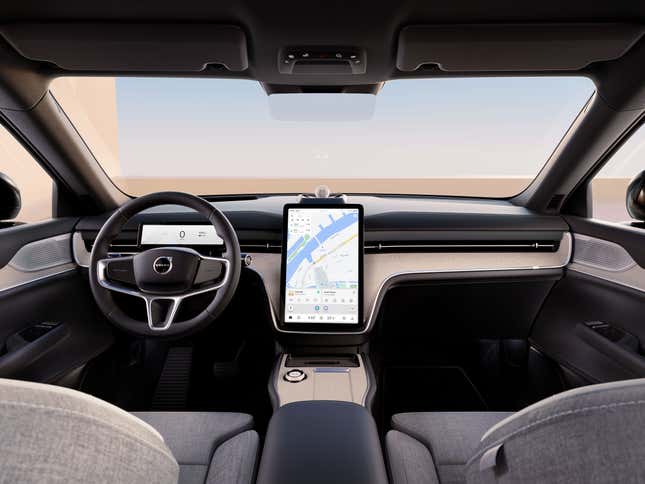
Visually, the EX90 extends the XC90’s big Volvo SUV theme, only it’s more rounded, with no grille and enhanced attention to aerodynamics enabling a low 0.29 coefficient of drag. To our eyes, it’s not as striking as its forebears; inoffensive, yet handsome enough. The interior, on the other hand, stands out. Spare, clean and very modern, yet at once warm and appealing, it moves an already strong game on. Volvo says it reflects the Swedish personality, though of course it would say that. I mean, I think I’m warm and appealing, too.
Copious textured wood veneers so thin they can be backlit are said to conjure the Nordic forest and look muted but classy. Two seating materials will be offered. One called Nordico scans like leather, but is made from materials drawn from recycled PET bottles and “bio-attributed material from responsibly managed forests.” (Bio-attributed? Sounds good, even if we’re not sure exactly what it means.) A wool blend said to be equally stain-resistant would be our preferred, holistic alternative, conferring all the cold and hot weather benefits of a less slippery surface area, and to our eyes a more inviting appearance. Altogether, Volvo says seven different “room” choices are available, blending different combinations of seating surface, wood veneer and interior color to synchronize with one’s choice of exterior hue.
Settling into the EX90’s capacious and comfortable front seats, the view ahead is good, but visibility to the rear, with the model’s profusion of headrests and comfy seats, is less so, making it another car of tomorrow that would be in serious trouble without all of its cameras, sensors, and warning lights. The infotainment situation has improved, though. A vertically oriented 14.5-inch touchscreen is centrally located, more intuitive and meaningfully simplified versus its predecessors and handling the great majority of secondary functions. A smaller screen directly ahead of the driver offers basic speed, range (reportedly 300 miles, by the way) and directional information, as well as a discreet home for some of the driver monitoring sensors.
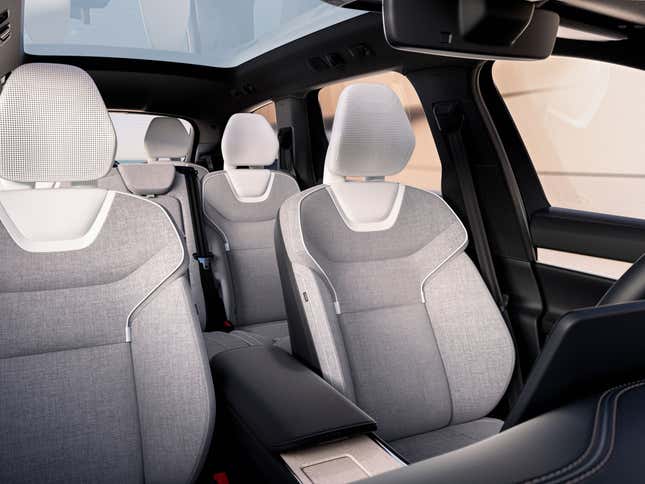
Our much-anticipated ride-along includes a handful of high-speed laps on the company’s banked Hallerad test track, along with several passes over the various surfaces on another track here. Said to replicate 19 different types of road surfaces, from European cobblestones to Los Angeles freeways, it suffices to give us a reasonable impression of what we are dealing with.
The EX90 is satisfyingly well-built; a quiet, big, heavy, comfortable thing, whose low-down battery weight helps it to hunker down at speed, and — at least in the model we rode in, with optional air-sprung suspension — to swallow up bumps and road irregularities with aplomb. In corners, little of the tippy SUV body roll we despise presents to thwart the approximately 6,000-plus-pounder’s progress. Its brakes are powerful and road and wind noise are subdued. Acceleration is brisk, if not nauseatingly so, with 0-to-60 times of under 5 seconds acceptable for any conceivable, reasonable situation. Much quicker than that and the safety of many ordinarily skilled drivers, their passengers, and fellow road users could be jeopardized. Volvo doesn’t say this, but with the profusion of hyper-fast EVs, someone ought to.
Meanwhile, the presence at Hallerad of a variety of fast, handsome models from Geely, Zeekr, Lynk & Co and Polestar scooting around the track and adjacent test facility underscore, along with the EX90, the mutual benefit of the Geely/Volvo hookup. Volvo is all about safety, and, as the man once said, there’s safety in numbers.
